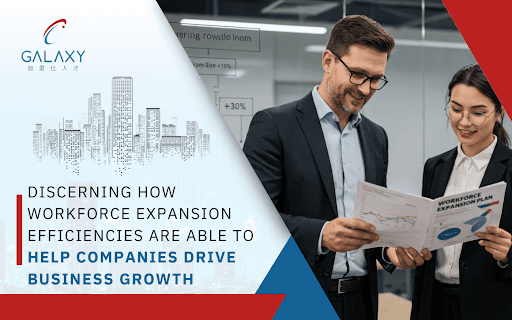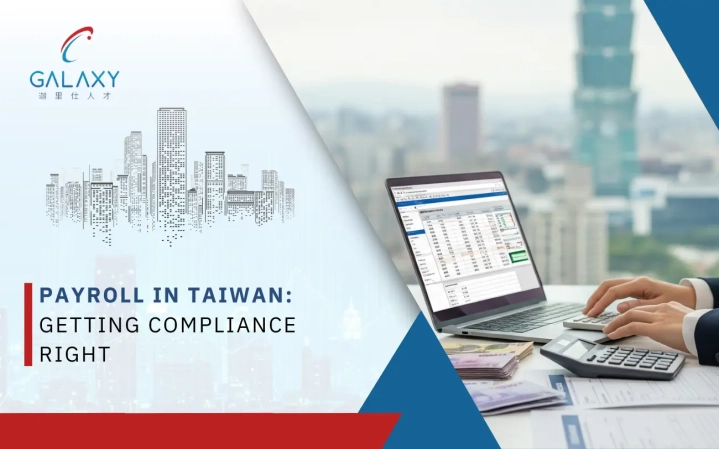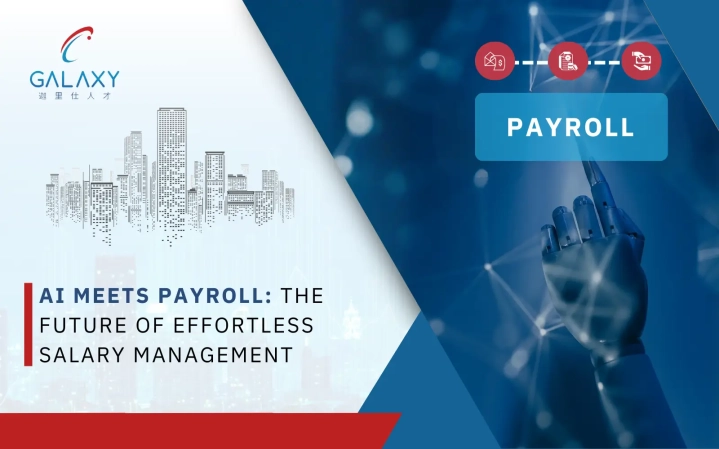Discerning How Workforce Expansion Efficiencies Are Able to Help Companies Drive Business Growth

In a world where market dynamics shift overnight and talent shortages can stifle growth, hiring swiftly is no longer a luxury but a necessity. Global companies that shorten their recruitment cycles and pair them with effective workforce planning are best placed to outperform competitors, manage costs, and adapt to change.
This blog explores why faster hiring is critical for international businesses, the tangible advantages it brings – from securing top talent to boosting innovation – and how strategic workforce planning complements speed with sustainability.
Why Faster Hiring Matters for International Businesses?
In today’s hyper-competitive global markets, companies cannot afford the costly delays caused by protracted recruitment cycles. The speed at which an organisation attracts, secures, and deploys talent often determines whether it leads or lags behind its competitors. Fast hiring not only helps fill critical roles promptly but also keeps operations agile, drives market responsiveness, and strengthens a company’s reputation as an employer of choice.
Below are the core reasons why accelerating your hiring process is essential for sustained international success:
1. Immediate Access to Scarce Global Talent
Highly skilled professionals do not remain in the market for long. In major talent hubs, from Singapore and Hong Kong to the Philippines and Vietnam, competition for top performers is fierce. A sluggish hiring process can mean losing out to faster-moving companies.
Swift recruitment helps secure top-tier candidates before they accept competing offers, ensuring projects progress without disruption and strategic goals stay on track. Moreover, efficient hiring signals to potential employees that your organisation values decisiveness and operational excellence. These qualities attract high-calibre talent.
Read Our Guide: Employer’s Guide to Drafting International Employment Contracts.
2. Quicker Market Penetration
Speed to market is a critical competitive advantage. Entering new territories demands local insight and operational capacity, both of which hinge on having a capable local team in place. Lengthy recruitment and entity setup delays can cede first-mover advantage to competitors.
A streamlined hiring approach enables companies to establish a local footprint swiftly, capitalise on emerging opportunities, and adapt to market shifts without costly downtime.
3. Cost Savings Through Efficiency
Prolonged vacancies translate directly into financial loss, not only through repetitive advertising and prolonged interview cycles but also due to productivity gaps that burden existing teams. Overstretched staff often face burnout and declining morale, compounding the hidden costs of slow hiring.
Conversely, efficient recruitment cycles reduce advertising spend, limit downtime, and allow new hires to contribute to revenue generation sooner. Resources saved can be reinvested in growth initiatives rather than lost in administrative drag.
4. Enhanced Business Agility
Market dynamics change quickly, whether it is responding to sudden customer demand, launching new product lines, or pivoting in response to economic conditions. Companies with agile hiring capabilities can scale teams up or down as needed, maintaining business continuity and competitive momentum.
A workforce strategy that supports rapid recruitment equips organisations to seize opportunities and manage risks without compromising on compliance or quality.
5. Stronger Employer Brand
First impressions are lasting. For candidates, the recruitment experience is a reflection of a company’s values and culture. A seamless, timely, and transparent hiring process conveys professionalism, respect for candidates’ time, and organisational efficiency.
Candidates who experience smooth hiring journeys are more likely to recommend the company to peers, strengthening the employer brand and creating a virtuous cycle of attracting better talent.
6. Faster Path to Innovation
Speedy hiring also fuels innovation. Diverse, high-performing teams bring fresh perspectives and problem-solving capabilities. By onboarding skilled professionals quickly, companies enrich their collective expertise and foster a culture of innovation that is vital in fast-evolving industries.
Why Workforce Planning Matters?
Fast hiring delivers immediate results, but when paired with effective workforce planning, it also builds a resilient, future-ready organisation. Workforce planning equips companies with a clear picture of current and future needs for relevant skill-sets, ensuring that recruitment is not only swift but also strategic.
Benefits of Strategic Workforce Planning
While faster hiring solves immediate resourcing needs, long-term business resilience depends on having a clear view of your workforce today and tomorrow. Strategic workforce planning bridges this gap by aligning your talent strategy with your business goals, optimising costs, and ensuring you have the right skills in place to thrive amid changing market conditions.
Here are the key advantages that effective workforce planning brings to an organisation:
1. Identify and Close Skill Gaps
A thorough analysis highlights where skills are lacking and where competency must be strengthened. This allows leaders to effectively direct training, upskilling, or targeted recruitment, precisely where it is most needed.
2. Align Talent with Business Goals
Workforce planning connects hiring decisions directly with business strategy. Managers gain clarity on the skills and roles required to deliver on long-term objectives, avoiding misaligned hires and redundant roles.
3. Control Costs and Minimise Waste
Predictive planning reduces the need for last-minute hiring, which often results in overpayment or a poor fit. Better forecasting enables companies to invest sensibly in talent pipelines, training, and succession planning.
4. Enhance Retention and Engagement
Employees who see clear career paths and development opportunities are more likely to stay. Proactive planning creates a culture of growth and continuous learning, fostering loyalty and lowering turnover.
5. Strengthen Agility and Scalability
When markets shift, businesses with an accurate workforce plan can adapt faster. Whether scaling operations, entering new markets, or responding to economic disruption, a well-planned workforce offers the flexibility to pivot without chaos.
Conclusion
A culture of speedy and efficient hiring will best position your company to grow, compete, and thrive in dynamic global markets. Galaxy Group helps customers combine efficient global hiring with deep expertise in strategic workforce management:
Employer of Record (EOR): Hire in new markets without forming a local entity.
Payroll and Compliance: Ensure every hire is legally compliant and efficiently paid.
Business Advisory: Align workforce structure with business goals and future trends.
Talent Insights: Identify skill gaps and design training or recruitment to close them.
Our end-to-end support allows you to focus on growth while we manage the risks and complexity.
Disclaimer
This article is intended for general information purposes only and does not constitute legal, tax, or professional advice. While Galaxy Group strives to ensure the information is accurate and up to date, readers should consult qualified advisors for guidance tailored to their specific business circumstances and compliance obligations in each jurisdiction.
Ready to Hire Faster?
Galaxy Group provides end-to-end EOR, Payroll and Workforce Solutions across Asia Pacific – so you can hire top talent quickly and compliantly.
FAQ’S
What is workforce planning, and why is it important?
Workforce planning is a strategic process that analyses an organisation’s current and future human capital needs. It identifies skill requirements, addresses workforce gaps, and ensures the right people are in the right roles to achieve business objectives. In a rapidly changing business environment, robust workforce planning helps companies stay competitive, manage costs effectively, and build resilience against market uncertainties.
How can a company implement an effective workforce plan?
Developing a successful workforce plan involves several key steps:
- Define the organisation’s strategic direction.
- Analyse the existing workforce and pinpoint skills gaps.
- Create a clear action plan to bridge those gaps.
- Execute the plan with appropriate recruitment, training, or restructuring.
- Continuously monitor outcomes and refine the plan as needed.
Following this structured approach ensures alignment between staffing needs and business goals.
What is workforce training and how does it differ from workforce development?
Workforce training is the targeted process of equipping employees with the specific skills and knowledge needed for their current roles. It focuses on practical competencies and safety, ensuring employees can perform effectively.
Workforce development is broader; it includes training but also emphasises long-term employee growth, leadership development and succession planning. It aims to build capabilities that benefit both the individual and the organisation, over a period of time.
What types of workforce training methodologies should companies consider?
Organisations typically invest in several training formats, including:
- Onboarding training: Integrates new hires smoothly into the company culture and operations.
- Technical training: Teaches role-specific tools, systems, or processes.
- Soft skills training: Develops communication, problem-solving, and teamwork capabilities.
- Leadership and management training: Prepares employees for greater responsibility and strategic roles.
What are workforce development programmes and how do they support growth?
Workforce development programmes are structured initiatives to enhance employees’ skills, adaptability, and leadership potential. Examples include:
- Upskilling programmes: Train staff to handle more complex tasks and responsibilities.
- Reskilling programmes: Equip employees with new capabilities for different roles within the organisation.
- Cross-training: Broadens employees’ skill sets to cover multiple functions, boosting flexibility and teamwork.
- Leadership and succession planning: Identifies and nurtures future leaders to maintain business continuity.
These programmes help companies retain talent, reduce recruitment costs, and sustain innovation.
How does effective workforce planning contribute to business growth?
Strategic workforce planning supports business expansion by:
- Ensuring optimal resource allocation and reducing unnecessary hiring expenses.
- Enhancing productivity through well-matched skills and efficient workflows.
- Increasing employee motivation and loyalty through clear development pathways.
- Equipping the organisation to respond swiftly to market shifts and scale operations sustainably. Collectively, these factors foster a resilient, high-performing workforce ready to deliver growth.




